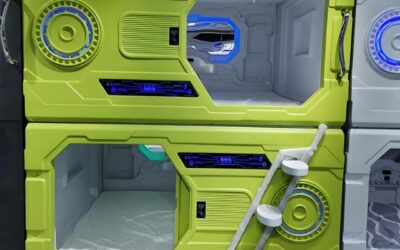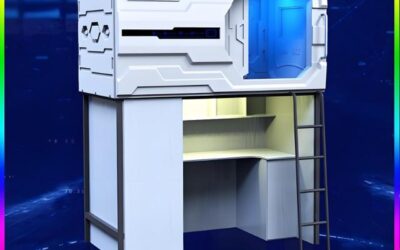Healthcare facility rest areas play a crucial role in the overall experience of patients, visitors, and staff within medical environments. These spaces are designed to provide relaxation and comfort, serving as a necessary respite from the often stressful atmosphere of healthcare facilities. In this article, we will explore the importance of healthcare facility rest areas, their features, benefits, and how they contribute to the well-being of everyone involved.
First, let’s define what healthcare facility rest areas are. These are designated spaces within hospitals, clinics, and other medical facilities where individuals can take a break. They are typically equipped with comfortable seating, calming decor, and sometimes even refreshments. The goal of rest areas is to create a peaceful environment that allows patients and visitors to recharge, reducing stress and promoting healing.
One of the primary benefits of healthcare facility rest areas is that they provide a much-needed escape. Hospitals and clinics can be overwhelming places, filled with bright lights, medical equipment, and the sounds of busy professionals. For patients and their families, this can lead to anxiety and fatigue. Rest areas offer a quiet space where individuals can sit, reflect, and gather their thoughts. By providing a break from the hustle and bustle, these spaces can significantly improve the emotional health of those who use them.
Another essential feature of healthcare facility rest areas is their design. A well-designed rest area incorporates elements that promote relaxation and comfort. Soft seating options, such as couches and lounge chairs, are commonly found in these spaces. Additionally, colors and decor are chosen to create a calming atmosphere, often utilizing soft hues and natural elements, such as plants and artwork. The layout is also essential; rest areas should be spacious enough to avoid crowding and allow for privacy.
In some healthcare facilities, rest areas go beyond just seating and decor. Many include access to refreshments, such as coffee, tea, and healthy snacks. This addition is beneficial, as it offers visitors and staff a chance to refuel during long hours in the hospital. Having access to food and drink can help keep energy levels up and improve overall mood, contributing to a more positive experience.
Moreover, healthcare facility rest areas can serve as important social spaces. They allow patients and visitors to connect with one another, share experiences, and provide mutual support. This sense of community can be incredibly valuable, especially in times of stress and uncertainty. By encouraging interaction, these spaces foster a supportive environment that can help alleviate feelings of isolation.
In addition to benefiting patients and their families, healthcare facility rest areas also support staff. Healthcare workers often face long shifts and high-stress situations. Having a designated area where they can unwind and recharge is essential for their well-being. Staff rest areas can help reduce burnout and improve job satisfaction, which ultimately leads to better patient care.
Another aspect to consider is the impact of rest areas on patient outcomes. Research has shown that a comfortable and supportive environment can enhance the healing process. When patients have access to a restful space, they experience lower stress levels, which can lead to improved recovery times. Healthcare facility rest areas, therefore, not only serve as a refuge but also play a role in the overall effectiveness of the treatment process.
The integration of technology in healthcare facility rest areas can further enhance the experience. Many modern facilities are incorporating features such as charging stations for electronic devices, Wi-Fi access, and even virtual reality options for relaxation. These technological advancements provide additional ways for individuals to unwind and stay connected, making rest areas even more versatile and appealing.
It is essential for healthcare facilities to prioritize the creation and maintenance of rest areas. Leadership should recognize the value of these spaces and allocate resources accordingly. Regular assessments should be conducted to ensure that rest areas remain functional, clean, and inviting. Gathering feedback from users can help identify areas for improvement and ensure that the needs of patients, visitors, and staff are being met.
In conclusion, healthcare facility rest areas are an integral component of the patient and visitor experience. By providing a space for relaxation and comfort, these areas help alleviate stress, promote healing, and support the well-being of everyone involved. The thoughtful design, essential amenities, and social aspects of rest areas make them vital to healthcare environments. As facilities continue to evolve, prioritizing rest areas will contribute to better healthcare outcomes and a more positive atmosphere. Investing in these spaces is not just about improving aesthetics; it is about enhancing the overall experience for patients, families, and healthcare providers alike.
Healthcare facility rest areas are more than just a place to sit; they are a sanctuary within the often hectic world of healthcare. By fostering an environment that promotes relaxation and connection, these areas hold the potential to make a significant difference in the lives of those who use them. Whether it’s a patient awaiting treatment, a family member seeking solace, or a staff member taking a much-needed break, the impact of well-designed rest areas cannot be overstated. As the healthcare landscape continues to change, embracing the importance of these spaces will be crucial in creating a more compassionate and effective healthcare system.




0 Comments